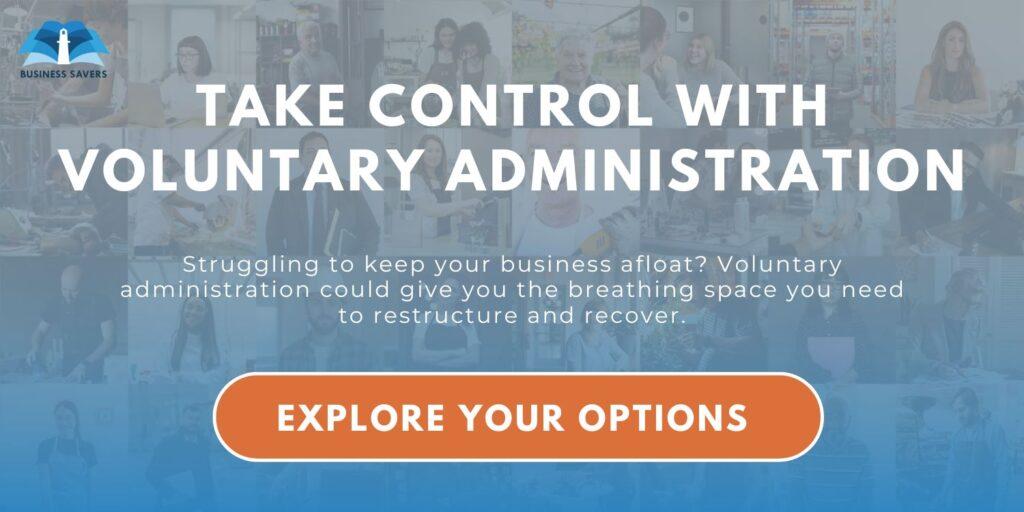Corporate insolvency law is some of Australia’s most complicated legislation. There are lots of options available, and deciphering the differences can be a challenge.
This changed in 2021 when the Australian Government released two new insolvency processes: Small Business Restructuring and Simplified Liquidation.
These new tools were aimed at supporting companies that suffered during the COVID-19 pandemic. They’re now a great option for businesses facing insolvency.
Small Business Restructuring holds several key benefits over Voluntary Administration. The two processes are similar, but Small Business Restructuring is simple, cost-effective and often improves outcomes for all stakeholders.
In this article, we’ll compare Small Business Restructuring and Voluntary Administration to see which is right for your business.
What is Small Business Restructuring?
Small Business Restructuring (SBR) is an insolvency tool that helps small businesses manage financial difficulties and avoid liquidation. SBR was introduced as a cost-effective alternative to Voluntary Administration.
SBR is a simplified process that’s available to small businesses with minimal liabilities. To be eligible for SBR, your company:
- Must be insolvent, or likely to become insolvent
- Have total liabilities of less than $1 million
- Be up to date with tax lodgements
- Be up to date with employee entitlements
- Cannot have previously used Small Business Restructuring or Simplified Liquidation in the past 7 years
During the SBR process, the directors of the company will continue trading the business while working with a specialist Restructuring Practitioner (RP). The RP will assess the company’s financial situation and develop a plan of action.
This Restructuring Plan will be presented to the company’s creditors. The creditors can choose to accept or reject the plan. If the plan is accepted, the company will undergo a restructure and repay some (or all) of its debts to creditors. This may involve:
- Selling assets and inventory
- Identifying and reducing waste
- Reducing staff
- Modifying day-to-day operations
- Consolidating debt
- Improving how the business operates
What is Voluntary Administration?
Voluntary Administration (VA) is a process that allows insolvent companies to repay their debts and potentially avoid liquidation.
Many insolvent companies find themselves facing claims from creditors. Repaying claims can be impossible for businesses experiencing financial difficulties. In many cases, insolvent companies are wound up in liquidation, and creditors are repaid a fraction of what they’re owed.
Voluntary Administration may allow companies to avoid this fate. During VA, the company is controlled by an independent Administrator. The Administrator will assess the company’s financial situation and develop a Deed of Company Arrangement (DOCA).
A DOCA is an agreement between the company and its creditors. As part of the agreement, the company will repay some (or all) of its debts while continuing to trade. This commonly involves restructuring the business and selling assets to meet debt obligations.

Small Business Restructuring vs Voluntary Administration
Small Business Restructuring and Voluntary Administration overlap in three key areas. They both:
- Allow an insolvent company to negotiate with creditors and develop a plan to repay outstanding debts
- Improve the chances that an insolvent company can avoid liquidation and continue trading
- Improve outcomes for the company, employees, creditors and directors
Small Business Restructuring is designed for small companies. SBR costs less, is subject to a maximum time frame of 3 years, and greatly improves the chances that a company will avoid liquidation.
Both options are suitable for insolvent and struggling small businesses. We recommend speaking with a professional adviser before making any decisions. SBR is subject to strict eligibility criteria, and VA may result in liquidation. Professional support can help you improve the outcome for everyone involved.
The Benefits of Small Business Restructuring vs Voluntary Administration
Small Business Restructuring is an excellent tool for companies with low liabilities and simple structures. It offers several key benefits to companies, directors and creditors, including:
1. Lower Costs
Voluntary Administration can be an expensive process for an insolvent company. A 2013 report found that small companies were spending an average of $31,500 to reach a Deed of Company Arrangement. That’s about $38,700 in today’s money.
Small Business Restructuring can be a more cost effective solution. According to ASIC, the restructuring process costs an average of $22,055 in 2022. Reducing the cost of restructuring makes it more accessible and less of a burden to businesses. Every situation is different and costs are dependent on a variety of factors. It’s important to speak to a professional before commencing any process.
2. Simplified Process
The Small Business Restructuring process is designed to be simple. It consists of four major stages, during which the directors and Restructuring Practitioner will create a plan of action.
One of the biggest time savings is that SBR doesn’t require creditors’ meetings. The RP isn’t obligated to report their findings to the creditors’, and votes are collected via written statement, which greatly speeds up the process.
3. Directors Retain Control
In SBR, the directors of the company work alongside the Restructuring Practitioner to develop a plan. Unlike Voluntary Administration, the directors retain control over day-to-day operations.
This is often preferable for many directors, as it allows you to continue contributing to the business’ management processes. It also improves the chances of the business’ survival. In many administration cases, the Administrator will choose not to continue trading the business, which can impact its chances of survival.
4. Simple Restructuring Plans
SBR is built around simplified, cash-only restructuring offers. This greatly streamlines the process of assessing the company’s financial position, developing a plan and raising cash that can be used to repay debts.
In contrast, VA has three potential outcomes: return control to company directors, develop a Deed of Company Arrangement, or place the company into liquidation. DOCA agreements can be complex and binds all unsecured creditors, even if they voted against the proposal.
5. No Automatic Liquidation
Many companies explore Voluntary Administration and SBR as a way to avoid liquidation.
In VA, the Administrator develops a plan of action and makes recommendations to the creditors. The creditors then vote and can approve the plan or place the company into liquidation. This results in the company immediately being wound up in liquidation.
Under SBR, creditors are asked to vote on the restructuring plan, but the company isn’t placed in liquidation if creditors decide against the plan. Instead, the SBR ceases and the business continues to trade as normal. Creditors can resume their claims and the company can explore options other than liquidation.
Get Your Company Back on Track with Advice from Business Savers!
Voluntary Administration and Small Business Restructuring are both useful tools for insolvent businesses. Before you make any decisions about how to manage your company’s insolvency, speak to the team at Business Savers.
Business Savers are registered insolvency professionals with decades of experience. We have helped businesses of all sizes manage Administration, Simplified Liquidation and Small Business Restructuring.
Our restructuring practitioners take a tailored approach to each case. Your company and situation is unique, and our solutions are designed to match.
Get in touch with Business Savers if you are concerned about your company’s future. You can book a confidential consultation online at any time, or call us to make an appointment.


Recent Comments